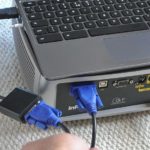How Cell Phones Connect to Mobile Networks
Smartphones utilize radio waves to connect to nearby cell towers. These towers then receive and transmit signals to a network of other towers, ultimately reaching another mobile device. The placement of these towers is strategically arranged in a honeycomb pattern to ensure each tower is within range of the nearest one.
However, in reality, tower placement may sometimes be uneven due to various reasons, resulting in denser tower concentrations in urban areas, while rural or mountainous regions may have fewer towers. Consequently, you may experience weaker signals in certain locations, especially as you move farther away from the transmission tower.
Environmental factors, such as challenging terrain with hills or mountains, high altitudes, or inclement weather, can also impact the signal strength.
When the signal is weak, your connection becomes unstable, affecting your ability to communicate effectively through applications that rely on a strong signal.
Here are some tips to improve your connection when facing signal issues:

Weak Mobile Signal Hindering Communication
Restart Your Mobile Service by Turning Airplane Mode On and Off/Rebooting Your Device
This is the simplest and quickest fix. When you experience an unexpected weak signal, restart your connection by turning your device off and on again, or more quickly, by turning Airplane mode on and off. This process helps reset your device, allowing it to search for and potentially connect to a stronger signal from a nearby tower.
Check Your Phone’s Battery Life
If your battery is low, your phone’s signal strength may also weaken. Disable power-saving mode and consider charging your device if it’s running low on battery. A fully charged phone will generally have better signal reception.
Change Your Location
Signal strength can vary depending on your position. Get up and move around to see if another spot offers better reception. Moving to an open, unobstructed area may improve your signal.
Keep Moving
If you are too far from a transmission tower or are on the move, causing your smartphone’s signal to weaken, it’s best to wait a few minutes and try again. If you don’t get any signal at a stationary position, move to a higher location or closer to the center of a city or town. Remember, just because you can see a transmission tower doesn’t guarantee a strong signal, as towers often have fixed directions in which they operate.
Inspect Your Phone
Sometimes, an older phone or one with technical issues may struggle to maintain a strong signal. In such cases, consider switching to a newer, better-functioning device.
Switch Your Service Provider
Different service providers may offer varying signal strengths in the same location. When moving between regions, consider switching to a provider that offers better coverage in that specific area.
Utilize Wi-Fi Calling
In cases where your mobile signal is weak, take advantage of a strong Wi-Fi connection. Use Wi-Fi to make and receive calls as an alternative to traditional cellular calls.
Use Signal Boosters for Consistent Weak Signals
If you frequently experience poor signal strength at home or work, consider installing signal boosters or antennas to enhance the signal quality in those areas.
Glitches on the Computer Screen: Comprehensive Guide to Troubleshooting and Resolving Issues
Computer screen flickering issues can be caused by a multitude of reasons, ranging from loose connections and electromagnetic interference to faulty hardware, incorrect software settings, or even external influences from storage devices. Accurately diagnosing the root cause of the problem is crucial for implementing an effective solution.




































